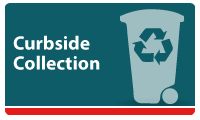Construction and Demolition Waste
Construction and Demolition Waste has a different composition to residential or other commercial waste, and has some special considerations. This page has details on how to manage and divert construction and demolition waste, as well as information on which bylaws and disposal policies are relevant to Construction and Demolition Waste.
Construction and Demolition waste makes up about 12% of the waste that goes into the Squamish Landfill, and another 11% of the waste is Mixed Waste, which includes construction and demolition waste containing divertible material. Of the Construction and Demolition waste that was audited in the 2020 Waste Composition Audit, over 40% of the waste was divertible wood waste.
Solid Waste Bylaw
Construction and Demolition Waste is subject to the Solid Waste Bylaw, which requires recyclables and organic waste to be separated from landfill waste. For most construction sites, this means separating wood waste, metal and drywall off cuts, and during the finishing stages separating cardboard and plastic overwrap from the garbage.
Many sites that take their own material to the landfill will use scrap wood to put together storage bins for different materials on their site so it can be easily separated ahead of time. The tipping fee at the landfill also reflects this requirement, with a significantly lower fee for separated wood waste, and free recycling for separated metal, cardboard and overwrap. Garbage containing more than 5% recyclable material is charged at the highest rate.
Demolition Waste Diversion Bylaw
Effective June 16, 2021, the Demolition Waste Diversion Bylaw was put into effect. Under this bylaw, a refundable fee of $20 per square metre is paid along with the Permit Application. When 80% or more of the waste is diverted by volume, the fee is refunded. Material can be sold or donated for reuse for 2 x the diversion credit. View the Demolition Waste Diversion Report . Please send any questions about this bylaw to zerowaste@squamish.ca
Gypsum and Drywall
The Squamish Landfill accepts drywall/gypsum from both large and small generators. It is important to note that there are different rules for small and large generators.
Small Producers:
- Place all drywall in a clear, gypsum disposal bag, tied using the goose-neck style, and then double-bagged. For more details, please see the "Disposing of Used Residential Gypsum" pdf.
- Must submit a Gypsum Declaration form (available online or at the Scale).
- Drywall tipping fee must be paid at the site.
- Up to 10 bags can be delivered per day, up to 4 times per year.
For Large Producers:
- The Squamish Landfill accepts drywall / gypsum for recycling (cut-offs or date-stamped post-1990).
- Drywall tipping fee must be paid at the site.
- If you have asbestos-containing drywall, or non-date-stamped drywall pieces, you must hire a private abatement company or bring the material (in a safe manner) to a site that accepts asbestos-containing drywall.
- More information about asbestos in gypsum board including qualified laboratories, asbestos abatement companies and disposal sites in the Drywall Acceptance Program brochure. (note this is not a full list – it is recommended you conduct your own research).
- A Gypsum Declaration form is required to deposit gypsum board the Squamish Landfill Public Depot. Copies are also available at the landfill scale house.
How do I know if my drywall is free of asbestos?
- It is date stamped 1990 or more recent, OR
- It has been analyzed by a qualified laboratory. Analytical report must be less than 6 months old and must include the address from which the gypsum board is to be removed.
Any drywall found put in the landfill is subject to a $500 fine.
WorkSafe BC has several asbestos resources including:
- Booklets and safety manuals for those working with and around asbestos
- FAQs for homeowners
- Toolbox meeting guides
- Videos for management, supervisors, and crew
Wildlife Bylaw
Many wildlife - human conflicts in Squamish are based around garbage. It is important to keep your construction side Bear Smart to avoid unnecessary conflict. It is the Contractor's responsibility to provide bear resistant bins for all food waste, keep any barbeques on-site clean, and to keep all food waste out of construction waste bins. The easiest way to do this is to have a no food waste on site policy, and ensure all lunch waste and barbeques are taken home at the end of the day.
Wildlife can also be attracted to petroleum products, paint and antifreeze. These materials should also be kept secure in bear resistant containers or lock-ups.
For more information on keeping your site wildlife resistant, please contact wildlife@squamish.ca. Report all wildlife sightings or encounters through the Conservation Service 24/7 hotline - 1.877.952.7277.
Resources
Construction and Demolition Waste Recycling Guide
Drywall Disposal Declaration Form
Drywall Disposal Information Sheet
Demolition Waste Diversion Report Template
Metro Vancouver Construction and Demolition Waste Toolkit
Bylaws
Demolition Waste Diversion Bylaw

Post your comment
Comments
No one has commented on this page yet.
RSS feed for comments on this page | RSS feed for all comments